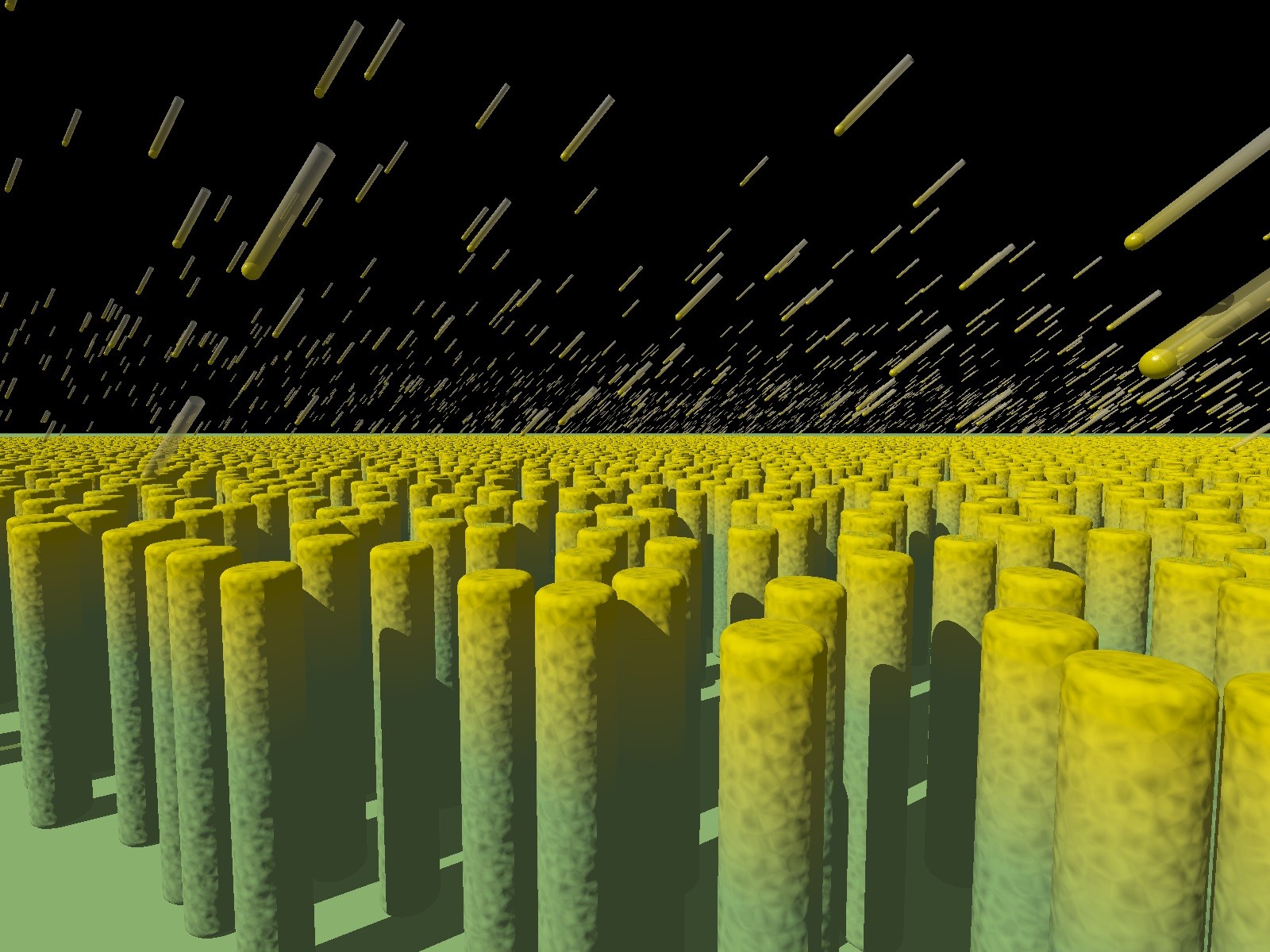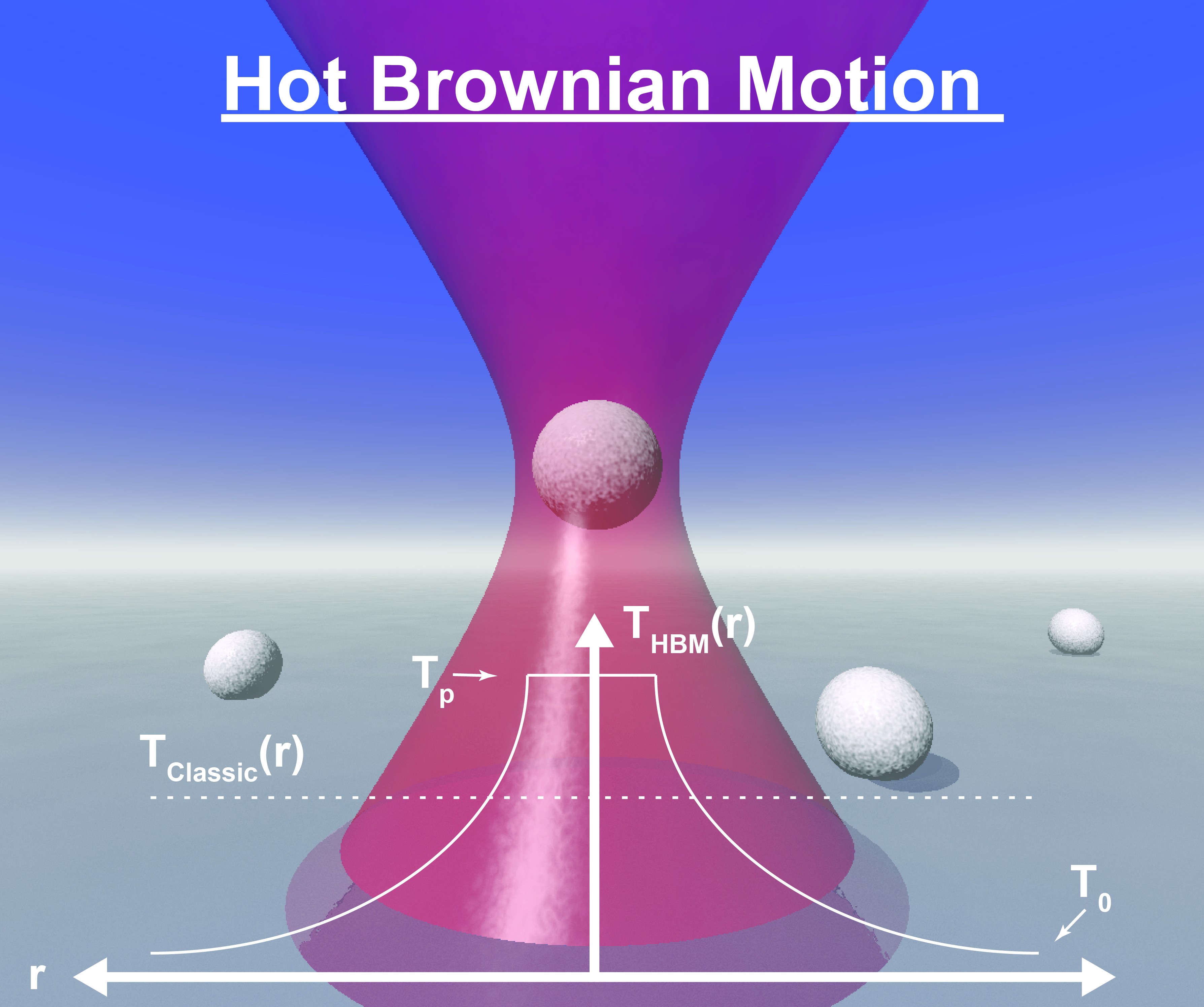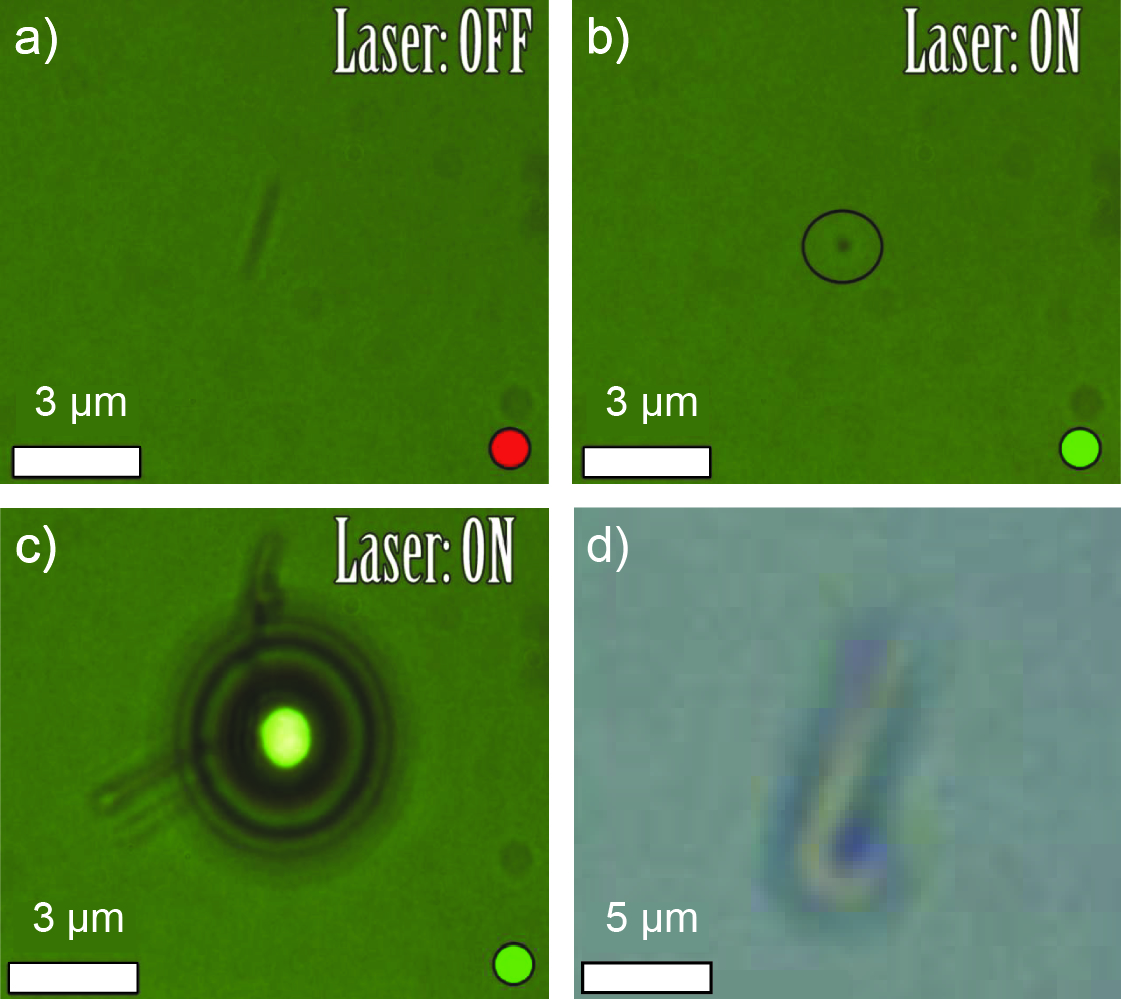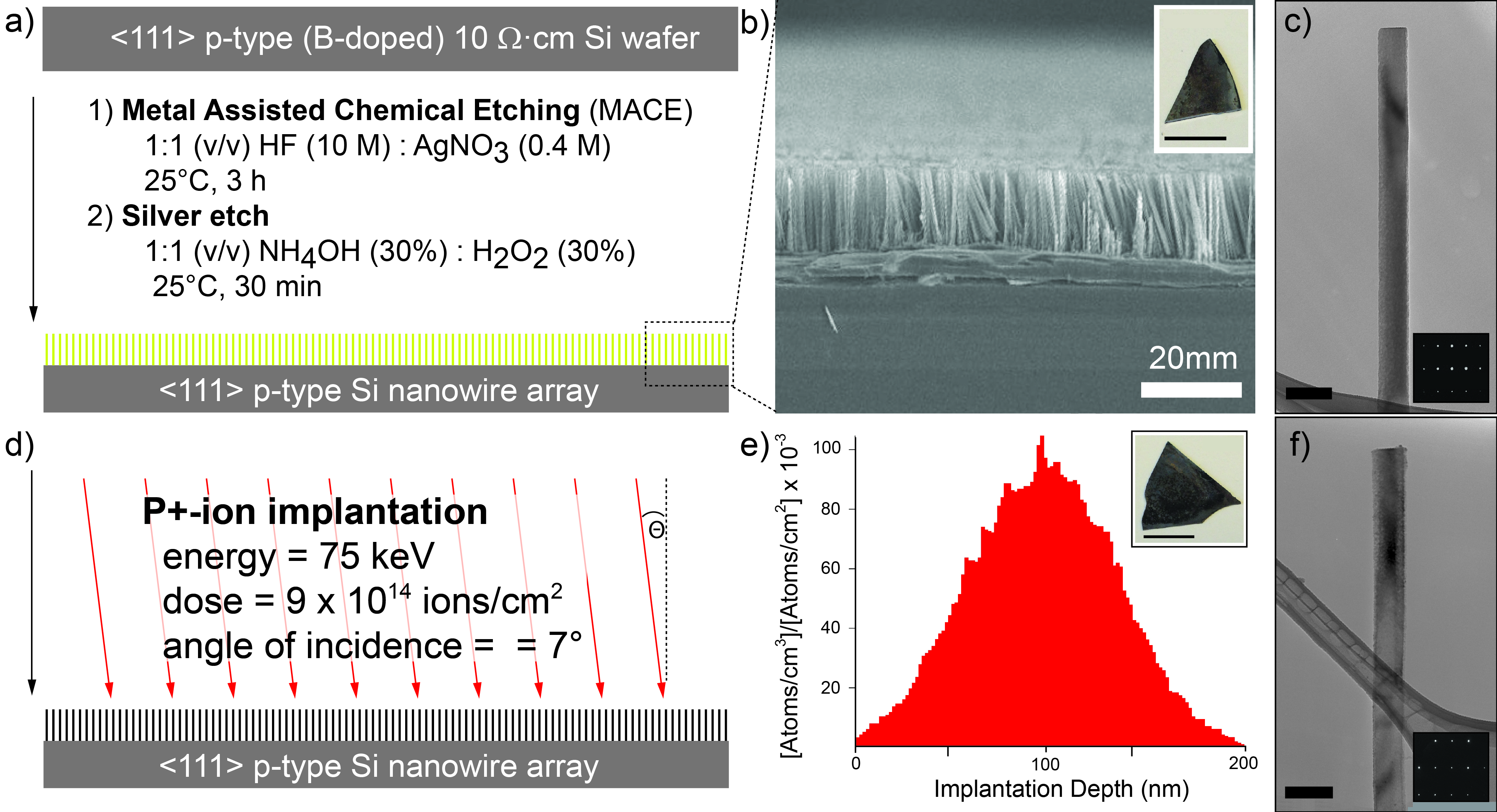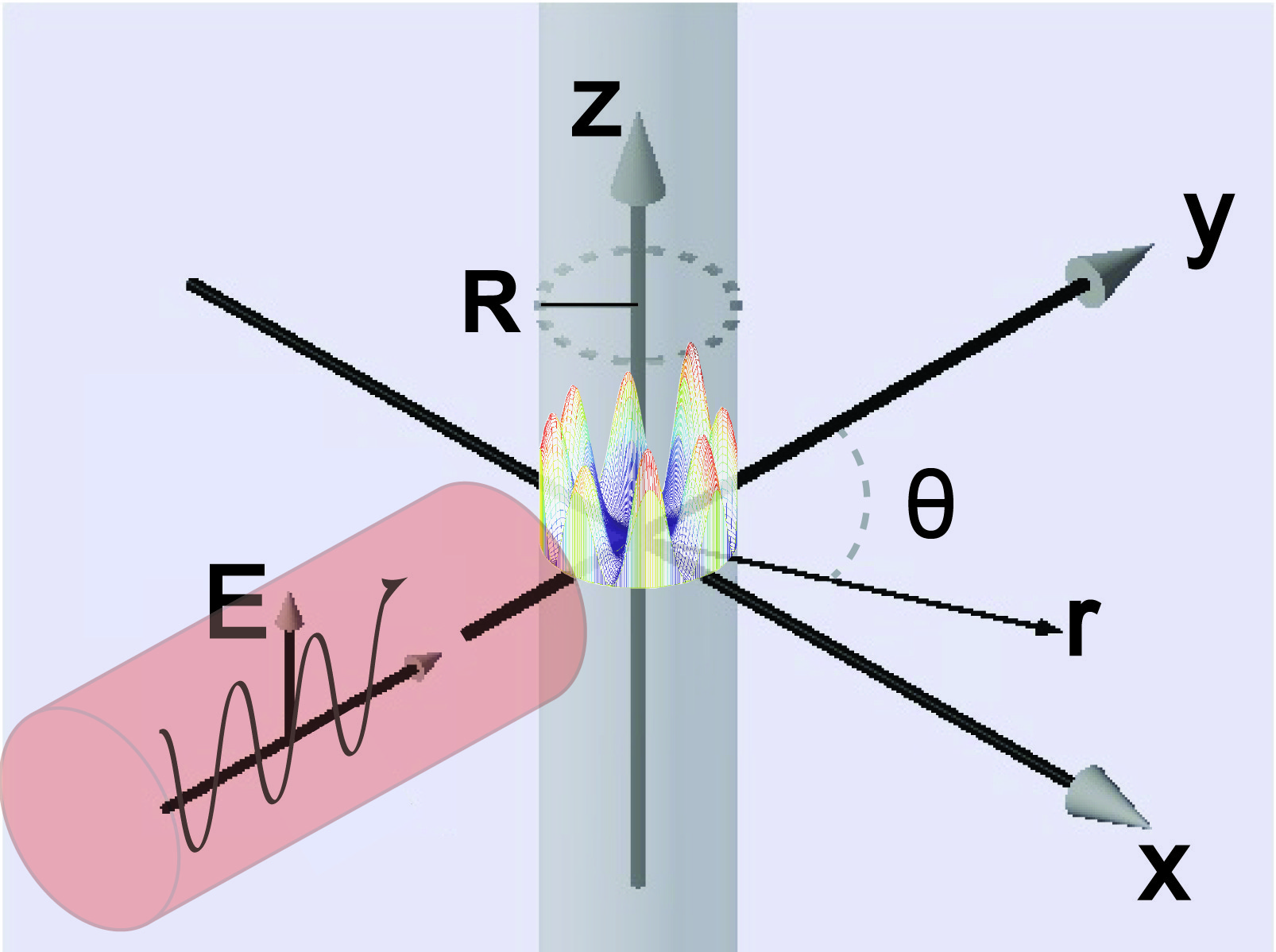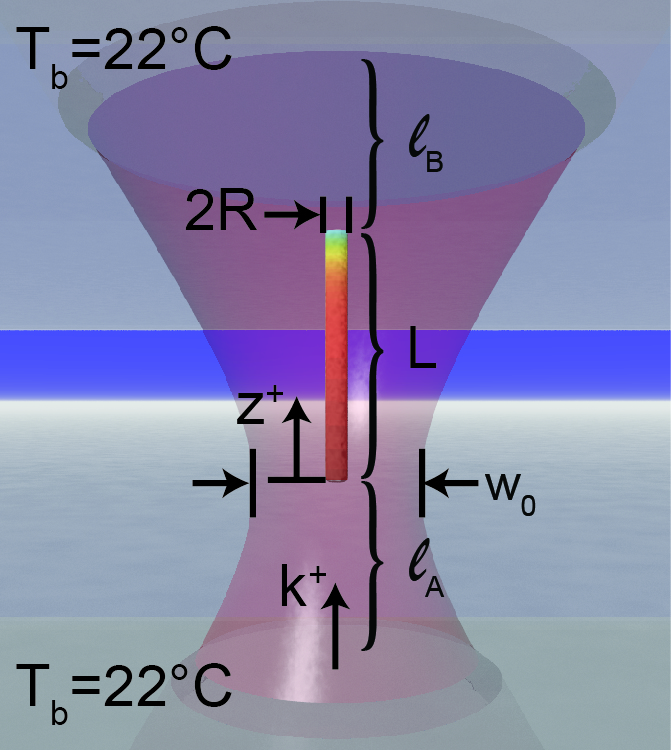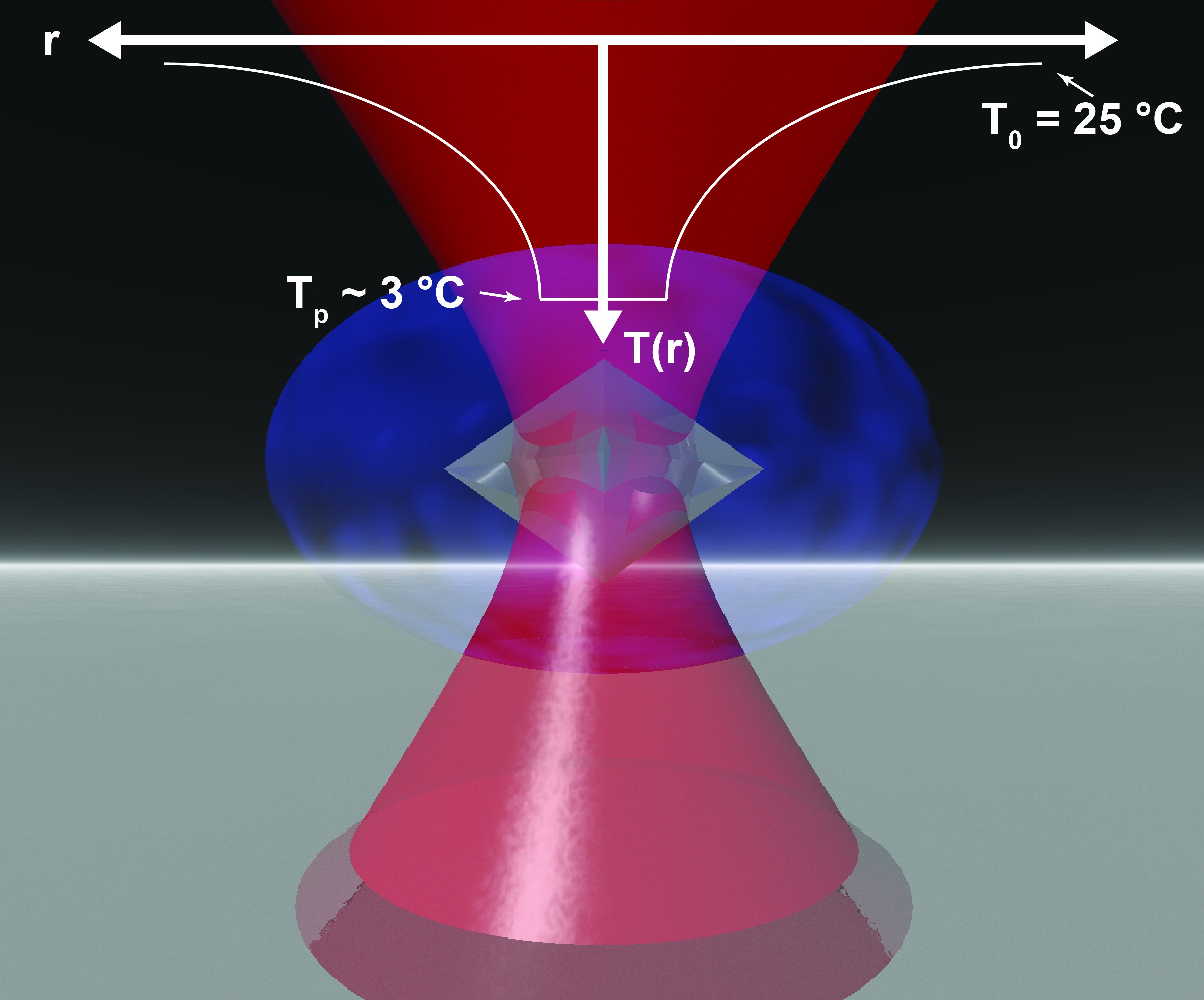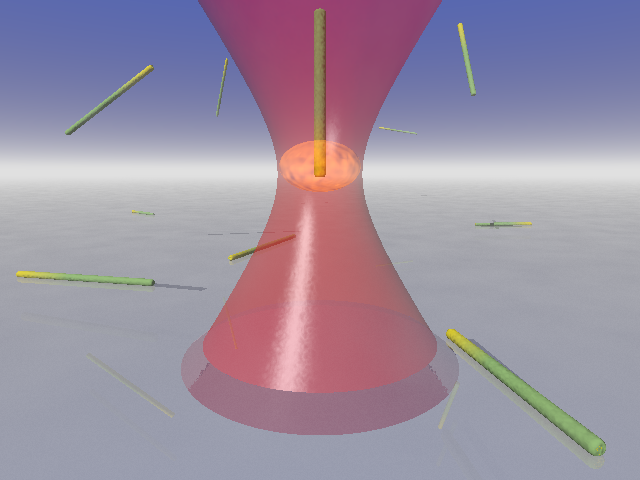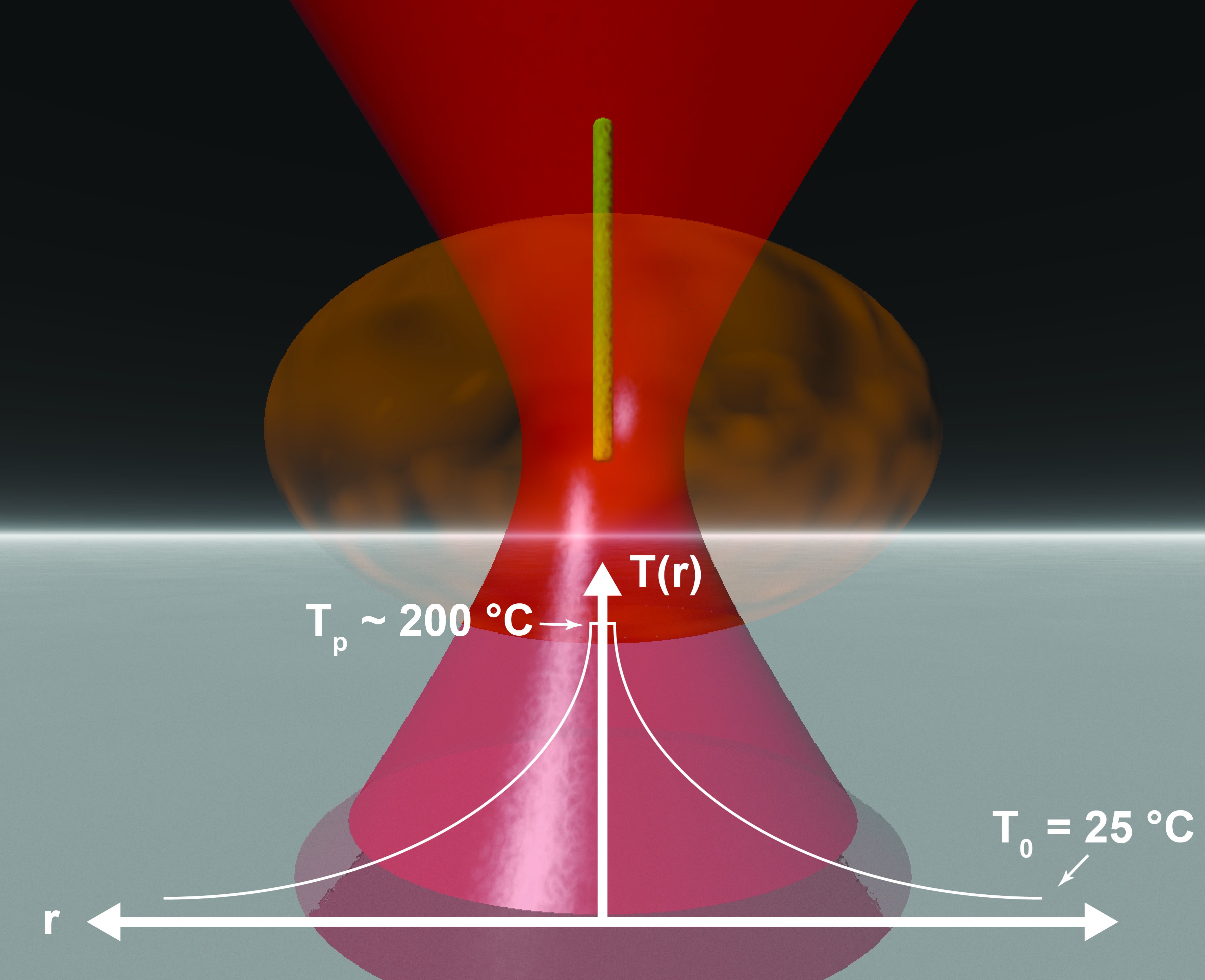Nanoparticle Temperature
Project Summary
Understanding the absorption of light by nanoscale materials is paramount to understanding a range of phenomena including: the modeling of atmospheric aerosols that have been implicated in global climate cycles, for the generation of electrical energy by nanoscale solar cell devices, during laser-thermal processing of semiconductor nanostructures, in the heating profiles of metallic nanoparticles used in biomedical therapies and diagnostics, for the soft ionization of biological macromolecules in mass spectrometry, for laser-assisted timed ionization events in atom-probe-tomography, for the characterization of nanoparticles with Raman spectroscopy, and more recently in the performance devices fabricated to achieve laser refrigeration.
In order to understand the optical heating of nanoparticles, we have 1) developed a theoretical model to predict the temperature increase in laser-irradiated nanomaterials, and 2) performed experiments with a laser tweezer to test those predictions by measuring the temperature of optically trapped nanoparticles. These particles are completely isolated from their surroundings, allowing for un-interfered thermal analysis.
My previous research focused on devising synthetic, experimental, and analytical methods to show the temperatures of optically trapped particles in environments that are not in thermal equilibrium with the trapped nanoparticle. The research resulted in articles showing 1) the superheating of water above 200 °C by optically trapped gold ion-implanted silicon nanowires, and 2) showing the first locally laser refrigerated nanoparticle in an aqueous medium undergoing hypothesized (but experimentally unrealized, until now) cold Brownian motion.
Related Media
Publications
Published
(* – Denotes co-first authorship)
- Roder P, et al. “Pulsed Photothermal Heating of One-Dimensional Nanostructures.” Journal of Physical Chemistry C. 120 (38), 21730-21739, (2016).
- Zhou X, Smith B, Roder P, Pauzauskie P. “Laser Refrigeration of Ytterbium-Doped Sodium–Yttrium–Fluoride Nanowires.” Advanced Materials. 28 (39), 8658-8662, (2016).
- Roder P*, Smith B*, Zhou X*, Crane M, Pauzauskie P. “Laser Refrigeration of Hydrothermal Nanocrystals in Physiological Media.” PNAS (Proceedings of the National Academy of Sciences). 112 (49), 15024-15029, (2015).
- Roder P, et al. “Photothermal Superheating of Water with Ion-Implanted Silicon Nanowires.” Advanced Optical Materials. 3 (10), 1362-1367, (2015).
- Smith B, Roder P, et al. “Nanoscale Materials for Hyperthermal Theranostics.” Nanoscale. 7 (16), 7115-7126, (2015).
- Smith B*, Roder P*, et al. “Hot Brownian Thermometry and Cavity-Enhanced Harmonic Generation with Nonlinear Optical Nanowires.” Chemical Physics Letters. 639, 310-314, (2015).
- Roder P, Smith B, Davis EJ, Pauzauskie P. “Photothermal Heating of Nanowires.” The Journal of Physical Chemistry C. 118 (3), 1407-1416, (2014).
- Roder P, Pauzauskie P, Davis EJ. “Nanowire Heating by Optical Electromagnetic Irradiation.” Langmuir. 28 (46), 16177-16185, (2012).
Acquired Skills
Laser & Optical Setups
Custom Single Particle Spectroscopy Setups
Simulations & Modelling
Optically-Induced Heat Generation (FDTD, FEA, DDA)
Programming & Analysis
Signal/Data/Image Processing & Analysis
Theoretical Modelling of Optical and Material Systems
Experimental Design & Analysis
Pre- and Post-Experimental Characterization (TEM, SEM, AFM, Raman, etc.)
Custom Photolithographic Fiducial Fabrication

